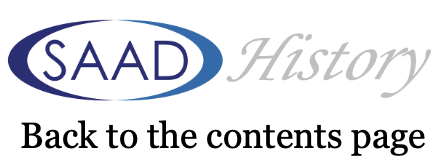Christopher Holden
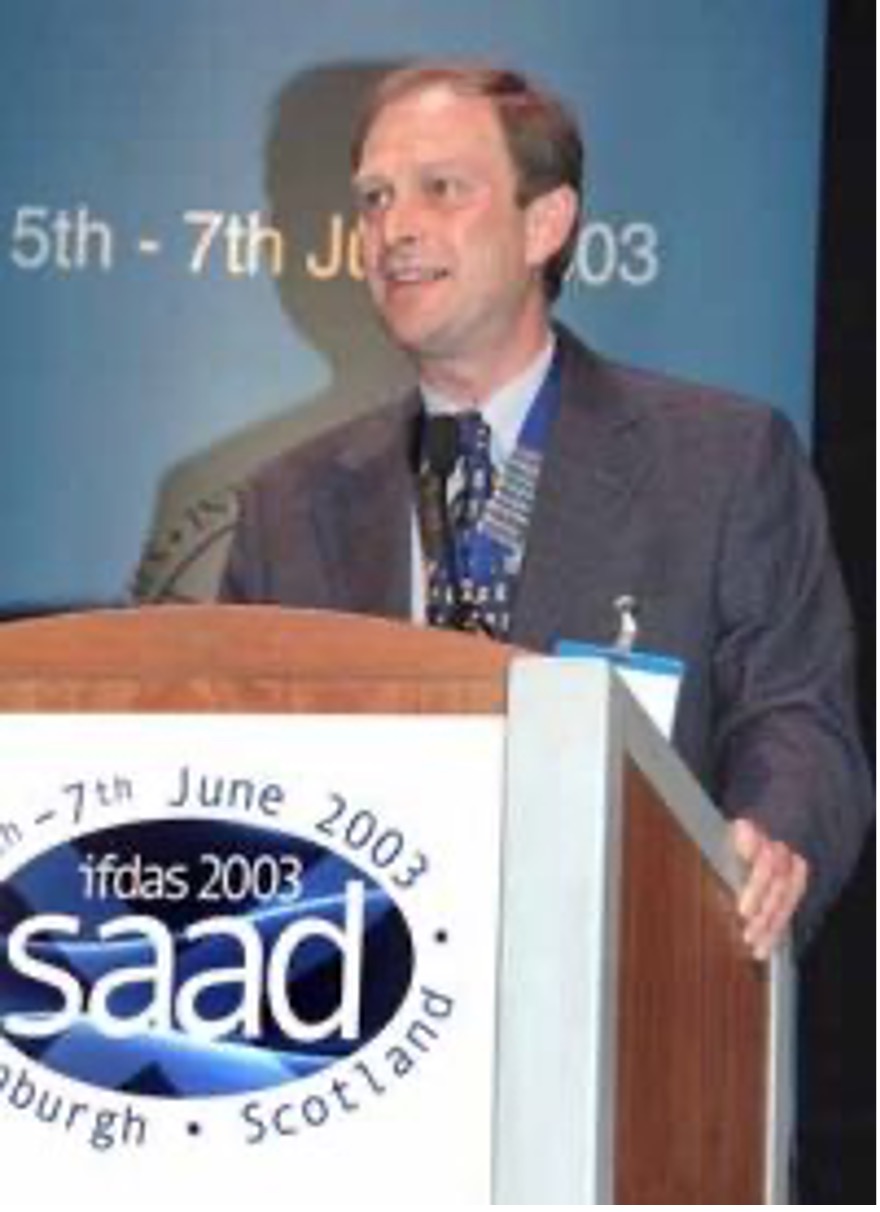
Dr Christopher Holden
During the Presidency of Dr Christopher Holden (2000-2003), SAAD continued to develop organisationally, and, for the first time, job descriptions were introduced for all Council members as the formalised structure of the charity was developed.
Along with other SAAD Council members Christopher had a background of council and committee membership of The Association of Dental Anaesthetists, Dental Sedation Teachers Group, and subsequently Academy of Medical Royal Colleges and multiple groups providing professional guidance for sedation.
As a member of the Advisory Board of Dental Protection the dental arm of The Medical Protection Society his interest was reflected in a period promoting demonstration of safe and justifiable sedation practice. After a series of experiences as an expert witness Christopher Holden persuaded SAAD Council the need for national standards in conscious sedation for dentistry. Subsequently SAAD published a comprehensive guidance document that was effectively the first “steps to take” direction to SAAD members providing dental sedation.
This was swiftly seen by the Department of Health as a useful tool for patient safety. It then commissioned its own standards document. That in turn led to a series of contemporaneous standards documents over the following decades. SAAD became a respected stakeholder in these.
Christopher Holden said “The diverse professional background of SAAD Council members dedicated to patient safety and leading the standards setting continuum belied any view that SAAD members were simply enthusiasts”
A number of regional ad hoc courses contributed to the centralised teaching including ‘First Response', a course on management of medical emergencies using advanced simulation techniques, led by Dr Diana Terry of the Resuscitation Council UK.
The “First Response” course introduced in 2000 was particularly significant– and it could not have been timelier. In July 2000 a Department of Health Review Group concluded that:
“All dental practices must have the appropriate equipment and drugs to deal with emergencies or the collapse of patients. The staff must be trained in coping with such emergencies. All members of the dental team must practice resuscitation together at regular intervals.”
IFDAS 2003
A landmark in SAAD history came in 2003, when SAAD played host to the International Federation of Dental Anesthesiology Societies’ Congress. It was the second time in 30 years that this honour had fallen to SAAD (which had after all played a key role in its formation), and the 10th IFDAS Congress. To appeal to as broad a range of international delegates as possible, as well as to reflect SAAD’s status as a UK-wide association, Edinburgh was chosen as the location. Driven by Christopher Holden, Douglas Pike, and Andrea Wraith the congress was seen as an opportunity to show SAAD at its best. SAAD council approved the underwriting of the venture, a decision that circumstances could have caused the society to take a hard financial hit. Unfortunately, the timing proved unpropitious, as Douglas Pike reported at the time:
“Holding a big international conference just after the Iraqi war and at the height of the scare surrounding the SARS virus was challenging. The aim was to give those delegates that did brave the danger in the skies a conference to relish and remember. In the event that was exactly what the participants got.”
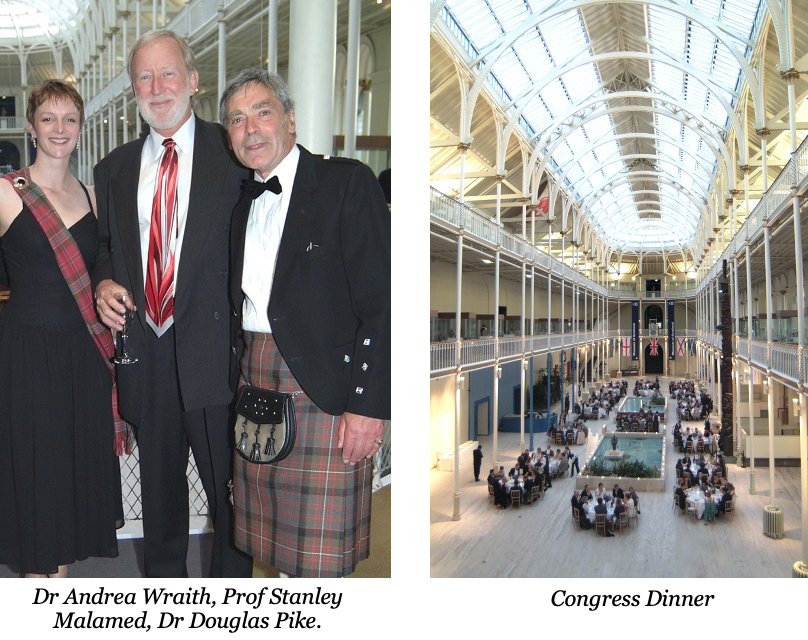
The opening reception was held in Edinburgh Castle, with former SAAD President Lord Colwyn opening the Conference. Lord Colwyn was at the time still practising dentistry in London and, as the SAAD summer newsletter noted, he ‘As it happens… sedated two patients the day before departing for Edinburgh.’
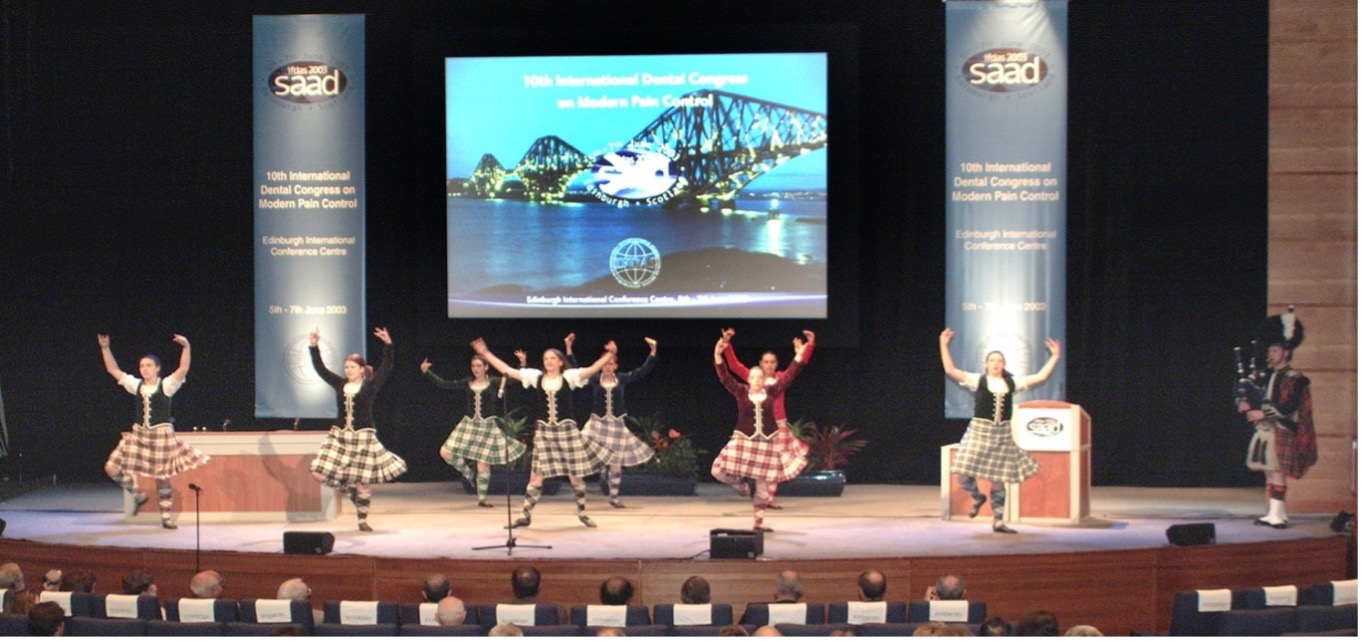
IFDAS 2003 attracted 449 delegates, of which 234 were from the UK. The international delegates came from 28 countries, including China, Mexico, Nigeria, Russia, South Korea, and Sri Lanka. There were 75 speakers, and 161 workshops. Professor Stanley Malamed of The University of California gave the opening address, and in the words of Douglas Pike ‘set the scene for the conference by highlighting the balance between patient safety and fulfilling patient expectations. In a word, education really is the key to pain and anxiety control for dentistry. Education not regulation was the theme that emerged from session after session.’
The Conference closed with the Presidential Scottish Banquet in the Great Hall of the Royal Museum of Scotland, complete with haggis, neeps and tatties and a Ceilidh. It was a memorable occasion (to the relief of SAAD Council, which had invested seed funding of nearly £20,000), and one that also saw the installation of Christopher Holden as President of IFDAS for a term of three years (2003-2006).
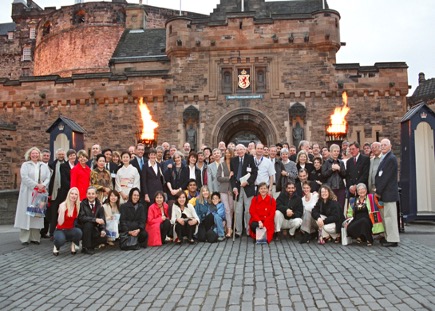
David Craig
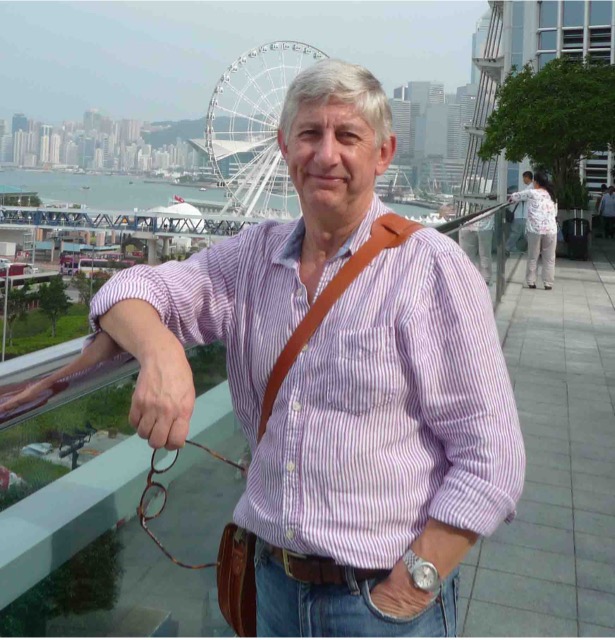
David Craig was SAAD’s Course Director from 2001 until 2019. He became President of SAAD in 2003.
The most important business occupying SAAD Council at the start of his Presidency was the new Trust Deed and Constitution. Several Council members had expressed concern that the existing deed no longer met the requirements of a modern charity. President-Elect Diana Terry led Council’s deliberations on this matter and, with the help of Bill Hamlin, Jason Leitch and Hugh Lyons, extended the remit to include the long-ignored question of professional indemnity for members who advise practitioners or teach on SAAD’s postgraduate courses.
In light of the increasing number of inspections being carried out by Primary Care Trusts of practices offering dental treatment under conscious sedation, Council members Derek Debuse and Andrea Wraith produced draft guidance designed to encourage inspectors to seek appropriate and relevant information in an update of The SAAD Evaluation Scheme. The resulting SAAD document contained a checklist along with accompanying notes and references. It was the origin of many similar checklists.
Around this time there was much discussion about the role of the so called ‘Advanced’ sedation techniques. In 2003 SAAD’s Annual Symposium, held in the Council Chamber of the General Dental Council, focussed on this topic; many of the comments and suggestions were subsequently incorporated into the SAAD National Course programme. In April of the following year, SAAD and the Faculty of Dental Surgery of the Royal College of Surgeons of England jointly presented a ‘Masterclass on Conscious Sedation’ to a capacity audience at Lincoln’s Inn Fields. The symposium covered Basic and Advanced techniques, education and medico-legal issues.
The Society maintained its position as the UK’s largest provider of postgraduate sedation education. The National Course in Conscious Sedation for Dentists and Dental Nurses was highly successful and heavily over-subscribed. The course programme continued to focus on the most useful and widely used ‘Basic’ sedation techniques whilst providing an introduction to ‘Advanced’ options.
David Craig’s presidential reports to SAAD Council and at the AGMs all pay tribute to SAAD's Executive Secretary Fiona Wraith’s tireless support for all SAAD’s activities during, what had turned out to be, a very busy three years.
The SAAD Digest and Newsletter, edited by Andrea Wraith and Jason Leitch, continued to be an important part of SAAD’s communication with the membership. In 2004 all members received a short questionnaire relating to the future of SAAD’s publications.
The Royal Society of Medicine had been the regular meeting place for SAAD until 1981. SAAD returned to the venue for the annual symposium in 2004. This relationship has continued annually to date. The RSM has provided both a welcome sense of continuity and excellent facilities for delegates, including accommodation for those travelling to London or wishing to
In 2004 SAAD Council signed a collaborative agreement with GKT Dental Institute (GKTDI) to establish the SAAD/GKT Visiting Professorship in Pain and Anxiety Control for Dentistry. Peter Milgrom, Professor of Dental Public Health Sciences at the University of Washington in Seattle, with a long-standing interest in the management of dental anxiety was appointed to this SAAD funded post for a period of three years. The negotiations between SAAD and GKTDI were led by Douglas Pike and Nairn Wilson, Dean of GKT Dental Institute. David Craig, Head of Sedation and Special Care Dentistry at Guy’s and St Thomas’ NHS Foundation Trust agreed to accommodate Peter Milgrom in his department.
In 2004 SAAD was invited to contribute to the BDA Conference in Bournemouth. Past President Christopher Holden organised a panel of speakers which included Michael Wood, Jason Leitch, Nigel Robb and David Craig.
The 2004 Annual Symposium, organised by Carole Boyle and Barry Devonald, explored the impact that Primary Care Trusts were exerting on the provision of conscious sedation in primary care. The subject had had been proposed by Douglas Pike. Hugh Lyons (Treasurer) suggested that it should be free-of charge to current SAAD members
Moving SAAD’s central office to the home of the Association of Anaesthetists of Great Britain and Ireland (AAGBI) at 21 Portland Place took place at this time and was a great success. Not only did we have Busola Oguntula from the AAGBI looking after our administrative affairs but we acquired a first class venue for meetings in Central London. Early in 2004, SAAD Council agreed that it would be appropriate for all Past-Presidents to receive a miniature medal based on the SAAD Presidential chain of office. These were struck by Thomas Fattorini of Birmingham and presented at a dinner held at the AAGBI.
SAAD became an incorporated (as opposed to unincorporated) Charity on 1st January 2005. As an incorporated charity, SAAD could retain funds and enter contracts; trustees also benefited from the protection afforded to directors of a company. Documents were produced to detail the charitable objectives of SAAD and to ensure that it complied with legal requirements. The Board of Trustees (the new name for SAAD Council) agreed a new trust deed and Constitution. These replaced the old trust deed and original constitution that had been drafted by the Lord Chancellor of England, but which no longer met legal and practical requirements of a modern charity.
In 2005 Christopher Holden led a complete redesign of the SAAD website - the Society’s gateway for anyone seeking postgraduate training or interested in wider involvement in pain and anxiety control.
For many years, SAAD’s National Courses had been held at the Robin Brook Centre at Barts’ Hospital but in 2005 we were given notice that the buildings were to be refurbished and the range of accommodation we required would no longer be available. SAAD Council accepted the Course Director’s proposal to relocate all future National Courses to Queen Mary University of London (QMUL) in Mile End Road. This change of venue and the increasing number of applications for the three National Courses run each year kept the Course Director and Course Organisers Derek Debuse and Toni Philpot extremely busy. From 2006 all courses were run at QMUL.
Diana Terry
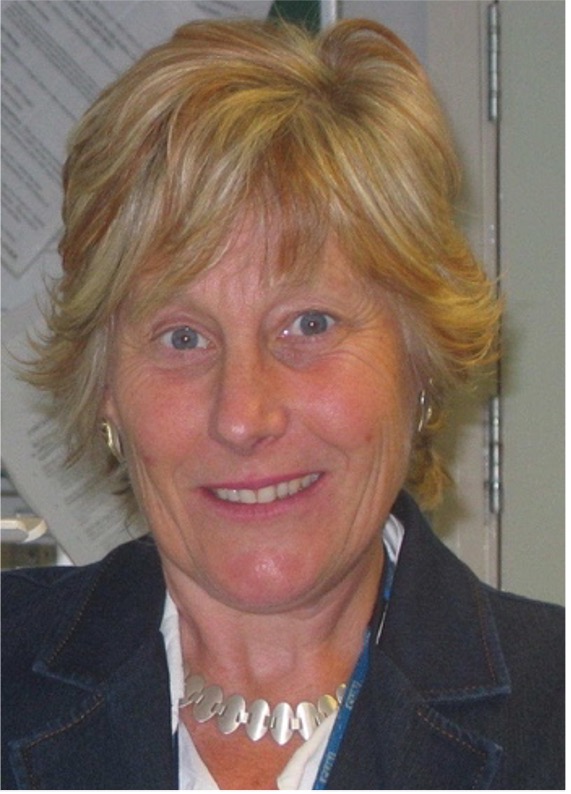
Dr Diana Terry, a consultant anaesthetist from Bristol became SAAD’s first female president in September 2006.
Understanding that SAAD was respected for teaching but lacked a scientific journal of standing Diana Terry persuaded SAAD Board to invest more in SAAD Digest. Dr Nigel Robb, became the Editor of SAAD Digest and revitalised the societies journal starting a renewal that strengthened into the 2020’s.
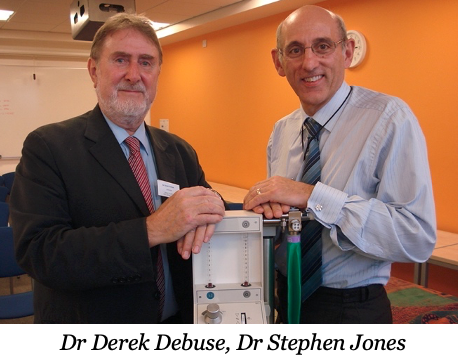
In April 2006 SAAD launched its RA machine loan scheme in conjunction with Cestradent McKesson, a historic manufacturer of dental anaesthetic and sedation machines. Designed to facilitate the use of inhalation sedation, it offers SAAD members the opportunity to trial inhalation sedation and scavenging systems for a six-month period – along with advice and support – with the option to purchase at a discount rate at the end of this time. This initiative was led by Dr Steven Jones and Dr Derek Debuse.
The early 2000s were a period of great innovation for SAAD in terms of its education and training provision, in part as a response to concerns about financial surpluses that conflicted with the Society’s status as a registered charity. One resultant development was a SAAD-endowed Chair in Anxiety and Pain Control for Dentistry based at King’s College London Dental Institute, a position that was occupied by the eminent Washington-based paediatric dentist Professor Peter Milgrom from 2006–2012. At the end of his term working alongside Dr David Craig and his colleagues at King’s, Professor Milgrom reflected on his experience in an article for Volume 29 of Digest:
“During the period of my Visiting Professorship, I made wonderful twice per year visits, usually staying in a tiny garret at Goodenough College in Mecklenburgh Square, becoming expert at using my Oyster and learning about the Tube and the buses, and attempting to master a new dialect of the language I thought I spoke well. I gained lots of experience with overcoats and umbrellas, which is saying something for someone from rainy Seattle.
I brought to this position experience both with pharmacological and psychological approaches to patients with dental anxiety and avoidance. David (Craig) asked me to offer tutorials for the Diploma and MSc students on behavioural aspect s of dental fears to enrich the in-depth experiences of the students with the pharmacological approaches used in Dentistry. I particularly recall the shock of a couple of students when I asked them to give me an inferior dental block so we could talk about how best to approach patients about this. These students did especially well.”
Research grants of up to £5000 were also offered from 2006 onwards, and SAAD funded the research of a PhD student, Joe Hulin, from 2003 – 2016. The results of this research, which explored the decisional needs of young patients, were published in a paper that appeared in Volume 33 of SAAD Digest. This concluded that: “The decision to undergo dental treatment with sedation or GA is a complex healthcare decision and warrants additional decisional support for both patients and their parents/ guardians.”
Nigel Robb
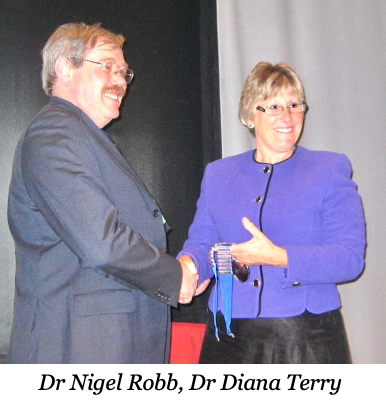
Nigel Robb was elected to the SAAD Presidency having previously served as roles as President of the Association of Dental Anaesthetists and European Federation for the Advancement of Anaesthesia in Dentistry and Chairman of the Dental Sedation Teachers Group
The first two years of his presidency were notable for the continuing fallout from the Global Financial Crisis in 2008. The value of SAAD’s assets was affected, and SAAD had to carefully manage our resources during that time. SAAD’s Treasurer, Steve Jones, put in sterling efforts to guide us through this period and enable the society to move forward to introduce many of initiatives that are now part of the life of SAAD.
The NICE guidance for sedation in children was produced during this time, and SAAD coordinated a robust response to the consultation.
SAAD was involved in theIntercollegiate Advisory Committee for Sedation In Dentistry, IACSD from its outset. Whilst the first incarnation failed and had to be disbanded, the Independent Expert Group for Training and Standards for Sedation in Dentistry was established and published three seminal documents:
- The syllabus for Advanced Sedation Techniques in Adults.
- The syllabus for Advanced Sedation Techniques in Paediatric Patients.
- CPD guidelines for those practicing sedation.
These three documents were used by the reincarnation of IACSD and the contents were included virtually unchanged in the IACSD standards.
SAAD went on to run two advanced sedation techniques courses following on from the production of the syllabi proving that it is possible to deliver this training.
To bridge one of the barriers to starting sedation practice, the SAAD Inhalation Sedation Machine Loan Scheme was introduced. This has proved successful in helping many who have completed our National Course introduce Inhalation Sedation to their practices.
The General Dental Council changed the Scope of Practice for Dental Hygienists and Therapists to allow them to undertake Inhalation Sedation if they had received the appropriate post registration training. SAAD took a leading role in the development of a course for these groups. This was the first time that SAAD undertook not only to deliver the didactic training, but also to verify the logbooks of students to confirm that they had completed their supervised clinical practice. This experience was hugely helpful when it came to having to apply for STAC accreditation. Nigel led this part of the course until he left for Australia in 2018.
In the 2013 edition of Digest, Nigel led the introduction of the online CPD that has become a popular feature with the membership and continues to grow in the number of submissions from members and non-members.
Carole Boyle
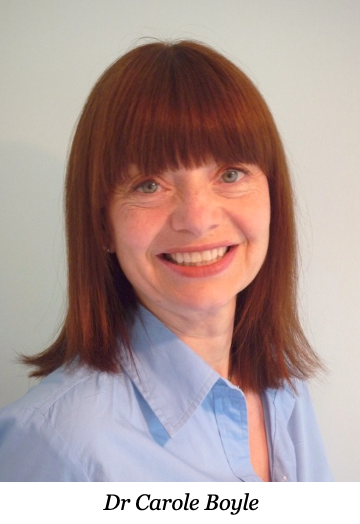
The Society continued to seek to extend its reach in subsequent years, and under the presidency of Dr Carole Boyle (2012-2015), free membership of SAAD was offered to all UK undergraduate dental students, along with reduced rates for the symposium and online access to SAAD Digest.
The funding of a PhD by SAAD was Carole Boyle’s idea, and she led the proper dissemination of SAAD’s surplus funds back into educational initiatives encouraging research that enhanced the society’s professional standing.
Carole Boyle promoted a much-needed change in the society bringing the contribution of women to the forefront. This widened SAAD’s teaching faculty and Board membership.
Francis Collier
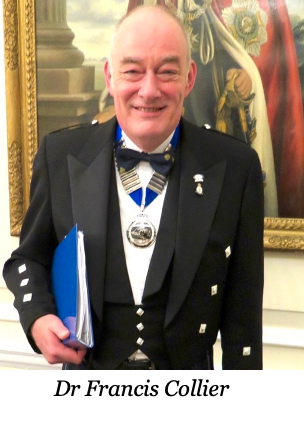
As president 2015-2018 Dr Francis Collier led SAAD through our 60th Anniversary year in 2017. In recent years SAAD had held Board dinners in the RAF Club in Piccadilly. The platinum anniversary dinner was well attended with numerous past presidents and guests who had contributed to SAAD over our last six decades.
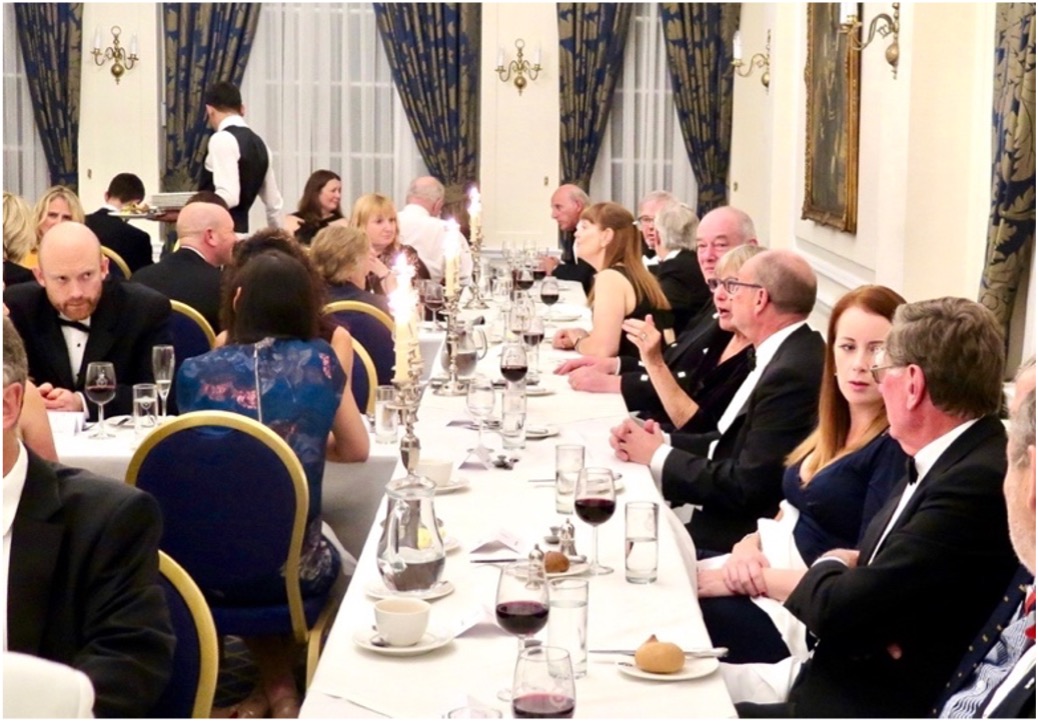
Stephen Jones
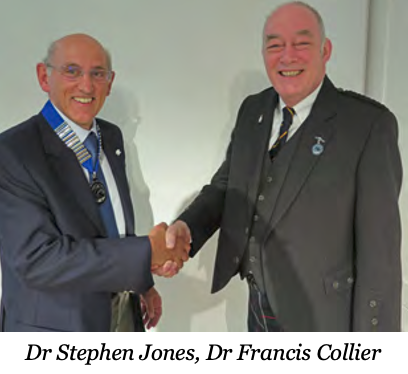
Dr Steve Jones was inaugurated as SAAD President. After being Honorary Treasurer for thirteen years in 2018 Dr Steve Jones assumed the presidency. His tenure was marked by a “steadying of the ship” following some years of change. Instigating a membership survey Steven Jones decided to pilot an annual symposium outside London and the event was held in Manchester in 2019.
By 2020 Steve Jones had to lead SAAD through the world changing events of national lockdowns and restricted professional and social meetings. As COVID 19 changed SAAD’s educational offering and the SSPS scheme was suspended a calm approach was required to guide the society. The challenges of continuing education remotely presented the Board with logistical problems not seen before and Steve achieved cohesion at a difficult time. By 2021 the annual symposium returned to The Royal Society of Medicine. The world had changed but members still wanted to meet and the symposium attracted over 200 members.
Sadie Hughes
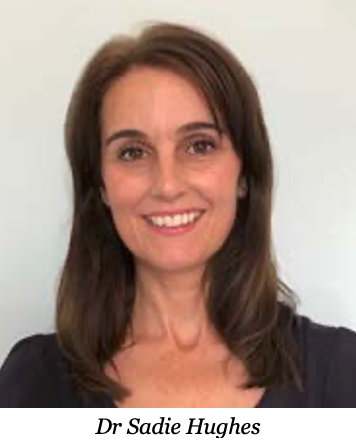
Dr Sadie Hughes became SAAD’s third female president.
SAAD had in early years been a male dominated organisation. Dr Diana Terry and Dr Carole Boyle did much to redress this balance during their presidencies. By 2021 the society had matured, and Sadie Hughes led a more plural Board.
By the time Dr Sadie Hughes assumed the presidency a new virtual world had become the norm, and the annual symposium was cancelled. The board of trustees continued to meet virtually and along with paediatric and anaesthetic colleagues, advised the sedation world on the safety of sedation in this turbulent time. With the widespread cancellation of general anaesthetic lists, sedation became even more important for those requiring pain and anxiety management for dentistry. Carole Boyle initiated a popular series of winter webinars enabling sedationists to stay in touch and provided much needed CPD and the SAAD National Sedation Courses went from practical to virtual and with the onset of a national lockdown, SAAD Safe Sedation Practice evaluations ceased.
A wave of vaccinations was rolled out and with the majority of clinical staff being vaccinated, a decision to resume the symposium in 2021 was made. It was an unexpectedly sentimental feeling to be back at the Royal Society of Medicine on Wimpole Street, to hold the symposium under the cloud of all that had passed, the historic public control measures and the lives that had been lost during the preceding 18 months.
Within a short space of time, the teaching world had changed dramatically. Sedation courses are often virtual, with correspondence and dissemination of information, digital.
By 2021 SAAD continued to offer practical hands-on teaching as the board felt this produced more confident, safer sedationists.
